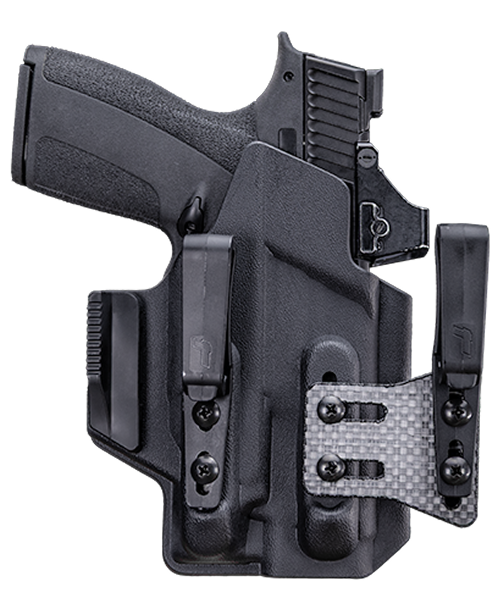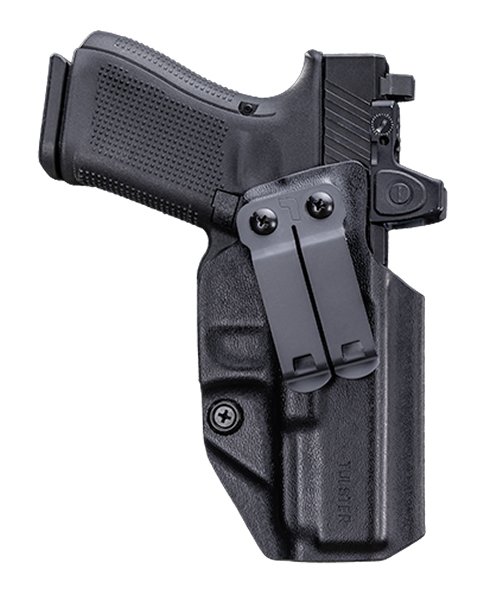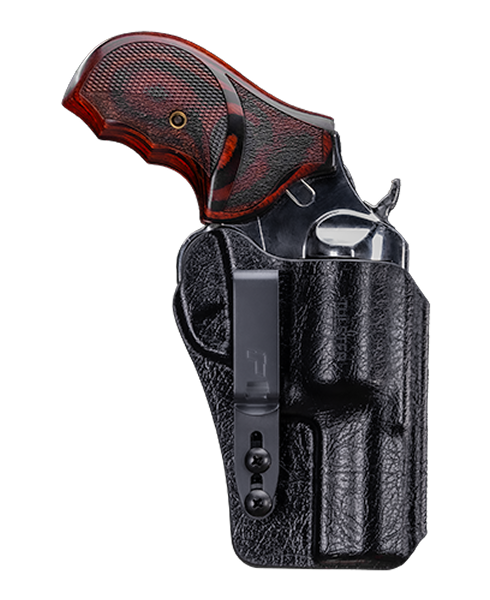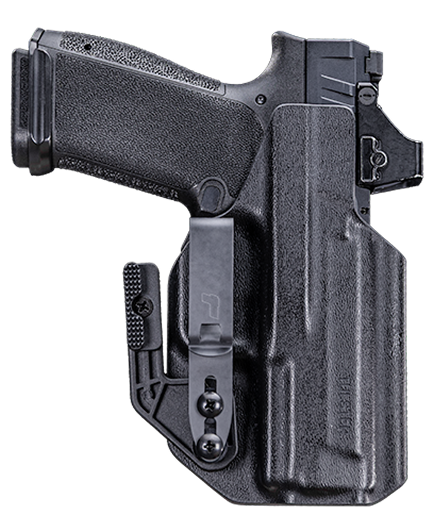Should You Get A Streamlight TLR-7 or SureFire X300?
Posted by Noah Ross on Oct 6th 2025
Choosing the Right Weapon-Mounted Light: TLR-7 vs. X300 — What You Need to Know
When carrying a handgun with a weapon-mounted light (WML), every detail matters: brightness, beam throw vs spill, size, weight, battery type, controls, durability, and how well the light integrates with your holster and handgun. For many, two of the most popular WMLs in the market are the Streamlight TLR-7 family (TLR-7, TLR-7 Sub, TLR-7X, HLX, etc.) and the SureFire X300 line. This guide will help you understand how to choose the best fit for your carry style — especially when carrying a Tulster holster.
Quick Spec Comparison
Here are key specs (performance, size, battery, etc.) for each, to set the baseline.
Pros & Cons
Here are what people often love, and what they usually dislike or compromise on, for each light.
Streamlight TLR-7 (and derived models: TLR-7 Sub / HLX / TLR-7X, etc.)
Pros:
- Compact size: less bulk, easier concealment, less snag when drawing, more comfortable for IWB or appendix carry.
- Weight advantage: lighter to carry.
- Adequate performance: 500 lumens is very usable for many defensive/light-duty situations, especially indoors or under low light.
- Versatility: newer models offering dual fuel / rechargeable allow flexibility in power source.
- Controls: side or paddle switches known for being intuitive and suitable for fast activation.
Cons:
- Not as much throw/candela (i.e., distance lighting) as the bigger full-sized lights. If you need to illuminate far, you'll lose performance.
- Shorter runtime on high settings; possibly more frequent battery changes or having to carry spares.
- Sometimes control surfaces are smaller, possibly more complex to manipulate with gloves or under stress.
- Heat buildup: A smaller heatsink means sustained brightness can lead to thermal throttling or discomfort.
SureFire X300 Family
Pros:
- Very high output; excellent throw and beam clarity. If you need to identify threats at some distance, the X300 shines.
- Durable, rugged build suited for duty or harsh environments.
- Wide support for holsters and aftermarket accessories; firmly established in LE/MIL markets.
- Strong weather resistance; overall, more capacity for sustained operation.
Cons:
- Bulk & size: heavier, larger bezel, more mass forward of the slide, more length, more likely to add "snag" or printing.
- They are more expensive, both in initial cost and often in battery/maintenance (if they are rechargeable or have higher output models).
- Harder to conceal in certain carry styles (e.g., deep IWB, appendix, small framed pistols).
- Activation may have a less "quick feel" in some grip configurations (depending on how your support hand or grip interacts with the rear switches).
What to Look for Given Your Carry Style
Here are some factors to help you decide:
- If you primarily carry for concealed everyday carry (EDC), especially in IWB, small profile, or appendix carry, lighter, flush-fitting lights like the TLR-7 series (especially the Sub / HLX / X variants) will be more manageable.
- If you're doing duty carry outdoors, expecting long durations, needing a significant range, or needing threat identification, full-sized lights like the X300 family will serve you better.
- If your handgun does not have a long rail or has minimal accessory space, the size and mounting of the light become critical factors.
Also, training with the light is essential: consistent draw, switching on/off under stress, grip, switch activation, and light discipline. Watch our recent training video to learn more about lowlight gunfighting.
Tulster Holster Compatibility & What Works Best
Tulster has several holster lines designed to be light-bearing and to accommodate weapon lights. To make the most of your EDC combo, it's important to pick the correct model and ensure the light matches the holster's light retention features.
Here are specific Tulster holsters (from the ARC Series) that are designed for or compatible with weapon-mounted lights, and how they match up with TLR-7 and X300 lights.
- ARC Series Light-Bearing Holsters: Tulster's ARC IWB Light-Bearing holster is explicitly "light-bearing" and designed with a Light Retention Device (LRD) that gives "click retention" around the light. These are custom molded using scans of the handgun with the light attached, meaning the fit is precise.
Tulster also offers options for various handgun models already configured with the light; it's essential to select the correct holster + light combo. Knowing your handgun + light model helps ensure correct retention and fit. For example, using a light-bearing holster made for a TLR-7 series with a full-size light like the X300 will not fit.
Tulster's ARC Series currently fits a number of Streamlight products with development of SureFire lights on the way, but bear in mind: ARC models made for TLR-7 Sub / HLX, etc., are not the same as ARC models made for the X300. The shape and bezel/body diameter differ, so the retention device and the molding matter.
Which Light + Handgun Combos Perform Best
Below are suggestions for which combinations of handgun + light (TLR-7 vs. X300) tend to deliver the best trade-offs for different use cases.
|
Handgun Type |
Good with TLR-7 / TLR-7X / Sub / HLX |
Good with SureFire X300 |
|
Subcompact & ultra-compact pistols (e.g., Glock 43, Sig X-Macro, Hellcat Pro, etc.) |
TLR-7 Sub or similar: minimal overhang, keeps concealability high, less bulk. |
X300 may protrude too far, be heavy, and more difficult to hide; it would be better for range/duty if your EDC is a subcompact. |
|
Compact pistols (e.g., Glock 19, Walther PDP, M&P Compact) |
TLR-7X / HLX gives good output without excessive bulk; beneficial for both home defense & EDC. Tulster ARC holsters with this setup deliver solid retention and concealment. |
X300 gives better performance especially in distance/outdoors; good choice if you can effectively conceal and consistently carry this setup. |
|
Full-size pistols/duty weapons (e.g., Glock 17, SA Echelon) |
TLR-7 still works, but you may trade off brightness/distance; concealment is less challenging. |
X300 tends to shine (both literally and figuratively) here. Full-sized frames handle the bulk, allow more grip mass to offset the front weight, and the beam throw is more meaningful. |









